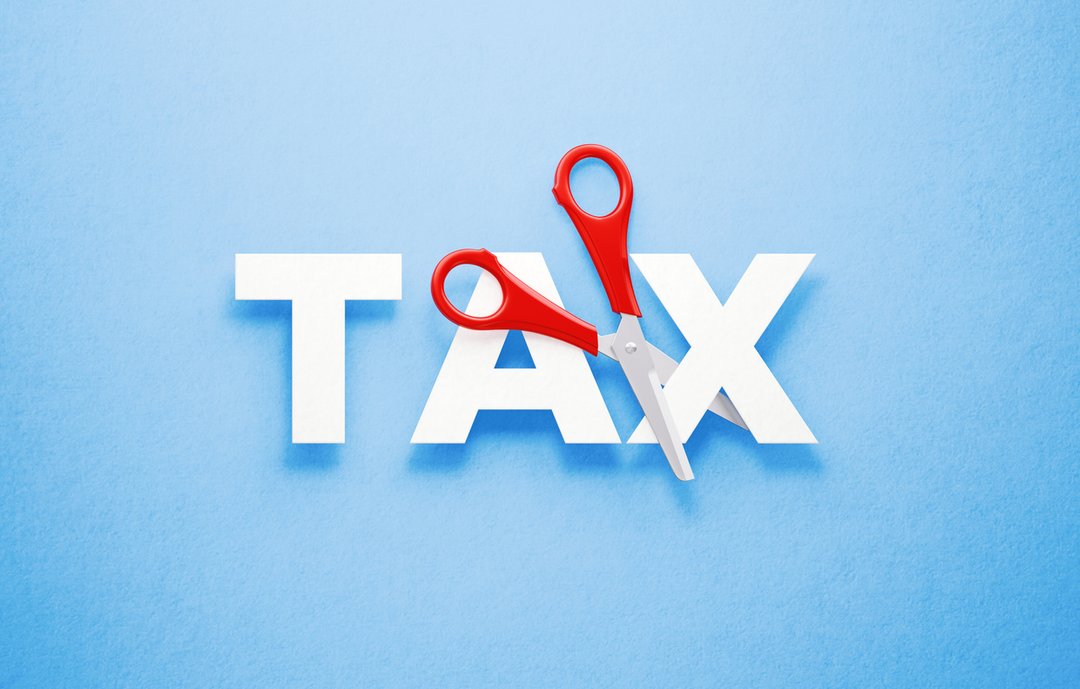
By MELISSA HORTON
Feb. 13, 2023
How to lower taxes is one of the most common financial planning concerns among individuals and business owners. The increased standard deductions under the Tax Cuts and Jobs Act (TCJA) provided tax savings for many (even though the TCJA did eliminate many other itemized deductions and the personal exemption).1
Taxable income can be reduced further with a few strategic steps.

iStock image
KEY TAKEAWAYS
- An effective way to reduce taxable income is to contribute to a retirement account through an employer-sponsored plan or an individual retirement account (IRA).
- Both health spending accounts and flexible spending accounts help reduce taxable income during the years in which contributions are made.
- A lengthy list of deductions remains available to lower taxable income for full- or part-time self-employed taxpayers.
- Saving for retirement can help lower your taxable income.
- Some employers offer flexible spending plans, so ask your employer about them.
Save for Retirement
One of the most straightforward ways to reduce taxable income is to maximize retirement savings. Although there are many types of retirement savings accounts to choose from, below are two of the most common that can help reduce taxable income in the tax year in which a contribution is made.
Employer-Sponsored Plan
Those whose company offers an employer-sponsored plan, such as a 401(k) or 403(b), can make pretax contributions up to a maximum of $20,500 in 2022 and $22,500 in 2023.23 Those 50 and older can make catch-up contributions of $6,500 in 2022 and $7,500 in 2023, above that limit.4
Because contributions are made pretax through paycheck deferrals, the money saved in an employer-sponsored retirement account directly lowers taxable income.5
In other words, the contributions reduce an employee's income for that tax year before income taxes are applied.
lndividual Retirement Account (IRA)
Individuals can also save by contributing to a traditional individual retirement account (IRA). The annual contribution amount to an IRA for the 2022 tax year is $6,000, with a catch-up provision of an additional $1,000 allowed for those 50 and older.6 That number rises to $6,500 for tax year 2023 with a catch-up contribution of $1000 allowed for those 50 and older.2
Traditional IRA contributions can be deducted from a person's tax return, reducing the taxes owed in the tax year of the contribution. However, unlike contributions to an employer-sponsored plan, IRA contributions are made with after-tax dollars, meaning the money has already had income taxes taken out.5
Taxpayers (or their spouses) who have employer-sponsored retirement plans may also be able to deduct some or all of their traditional IRA contribution from taxable income. The IRS has detailed rules about whether—and how much—they can deduct depending on their income.5
In December 2019, the Setting Every Community Up for Retirement Enhancement (SECURE) Act was signed into law. For 2019 and years prior, taxpayers over the age of 70½ could not contribute to a traditional IRA. As of 2020, the age limit no longer applies. Taxpayers beyond the age of 70½ can contribute a maximum of $7,000 per year in 2022 and receive the full tax benefit. That amount rises to $7,500 for 2023.276
Consider Flexible Spending Plans
Some employers offer flexible spending plans that allow money to be socked away pretax for expenses such as medical expenses.8
A flexible spending account (FSA) provides a way to reduce taxable income by setting aside a portion of earnings in a separate account managed by an employer. An employee can contribute up to $2,850 in 2022 (rising to $3,050 in 2023).910811
Under the use-or-lose provision, participating employees have to incur eligible expenses by the end of the plan year or forfeit unspent amounts. Under a special rule implemented during COVID-19, employers may offer participating employees more time through either a carryover option or a grace period (2.5 months).11
Under the carryover option, an employee can carry over up to $550 of unused funds to the following plan year in 2022 (rising to $610 in 2023). Under the grace period option, an employee has until 2.5 months after the end of the plan year to use the remaining money, but none can be carried over. Employers can offer either option, but not both, or none at all.12
IMPORTANT: During the COVID-19 pandemic, the IRS released guidance that allowed employers more flexibility for benefit plans as part of the Consolidated Appropriations Act. Employers can allow employees to carry over all unused funds from 2022 to 2023 — or they can extend a grace period of 2.5 months in 2023 for employees to use up their remaining 2022 funds.13
Health Savings Account (HSA)
A health savings account (HSA) is similar to an FSA in that it allows pretax contributions to be used for healthcare costs later. HSAs are only available to employees with high-deductible health insurance plans.14
Minimum Annual Deductible
According to the Internal Revenue Service (IRS), for 2022, a "high deductible health plan" has a minimum annual deductible of $1,400 for self-only coverage or $2,800 for family coverage.15 In 2023, that rises to a limit of $1500 for self-only coverage and $3,000 for family coverage.9
Annual Contribution Limit
The 2022 annual contribution limit is $3,700 for individuals and $7,400 for families.1617 That rises to $3,950 for individuals and $7,900 for families in 2023.9
Maximum Annual Out-of-Pocket Expenses
Also, under a high-deductible plan, annual out-of-pocket expenses, which include deductibles, co-payments, but not premiums, do not exceed $7,050 for self-only coverage or $14,100 for family coverage in 2022.18 In 2023, the maximum for self-only coverage is $7,500 and for family coverage, $15,000.
HSA contributions can be rolled over if unused in the year they were saved.19
Take Business Deductions
A lengthy list of deductions remains available to lower taxable income for full- or part-time self-employed taxpayers.
Home Office Deduction
A home office deduction, for instance, is calculated using either a simplified or regular method to reduce taxable income if a portion of a home is used as dedicated office space.21 The self-employed can also deduct a portion of their self-employment tax and the cost of health insurance, among other expenses, to lower taxable income.22
Business Expenses
Business owners or those with professional, deductible expenses can make upcoming necessary purchases or expenditures by the end of the tax year. This can make a significant difference for those buying a substantial item for which the purchase price can be put on business expenses.23
Retirement Savings Plans
A variety of retirement savings plans exist for the self-employed, including an individual 401(k) and a simplified employee pension (SEP) IRA. Both options provide an opportunity to lower taxable income through pre-tax contributions and allow for higher limits on contributions each year.
The SIMPLE IRA allows contributions of up to $14,000 in 2022, plus an additional $1,000 for those age 50 and older. The limit for a SIMPLE IRA rises to $15,500 in 2023.24 The Solo 401(k) allows contributions of up to $20,500 tax-free in 2022 and $22,500 tax-free in 2023.6 The SEP-IRA allows tax-deductible contributions of up to 25% of compensation, up to $61,000 in 2022 and $66,000 in 2023.2526
The SECURE Act
The SECURE Act has implications for small business owners. The Act encourages business owners to set up retirement plans for employees by providing tax incentives if they collaborate with other small businesses to offer Multiple Employer Plans or MEPs.27
The SECURE Act also allows more part-timers to save through employer-sponsored retirement plans, starting in 2021. To do so, workers will need to put in at least 500 hours a year for three consecutive years to be eligible.7
The Bottom Line
Tax reform eliminated many itemized deductions for most taxpayers, but there are still ways to save for the future and trim their current tax bill. To learn more about deductions and tax savings, consult a tax expert.
Article sources:
Investopedia requires writers to use primary sources to support their work. These include white papers, government data, original reporting, and interviews with industry experts. We also reference original research from other reputable publishers where appropriate. You can learn more about the standards we follow in producing accurate, unbiased content in our editorial policy.
- Internal Revenue Service. "Publication 5307: Tax Reform Basics for Individuals and Families," Page 1.
- Internal Revenue Service. "401(k) limit increases to $22,500 for 2023, IRA limit rises to $6,500."
- Internal Revenue Service. "Retirement Topics - Contributions."
- Internal Revenue Service. "Retirement Topics—Catch-Up Contributions."
- Internal Revenue Service. "Publication 590-A (2020), Contributions to Individual Retirement Arrangements (IRAs)."
- Internal Revenue Service. "IRS Announces 401(k) Limit Increases to $20,500."
- U.S. Congress. "H.R.1865 - Further Consolidated Appropriations Act, 2020."
- Internal Revenue Service. "26 CFR 601.602: Tax Forms and Instructions."
- Internal Revenue Service. "IRS provides tax inflation adjustments for tax year 2023."
- National Institutes of Health. "Flexible Spending Accounts (FSAs)."
- Internal Revenue Service. "IRS: Eligible Employees Can Use Tax-Free Dollars for Medical Expenses."
- Internal Revenue Service. "COVID-19 Guidance Under §125 Cafeteria Plans and Related to High Deductible Health Plans," Page 11.
- Internal Revenue Service. "Health Savings Accounts and Other Tax-Favored Health Plans," Page 2.
- Internal Revenue Service. "Publication 969: Health Savings Accounts and Other Tax-Favored Health Plans," Page 3.
- Internal Revenue Services. "26 CFR 601.602: Tax Forms and Instructions," Page 2.
- Internal Revenue Service. "26 CFR 601.602: Tax Forms and Instructions (2020)," Page 1.
- Internal Revenue Service. "26 CFR 601.602: Tax Forms and Instructions (2021)," Page 1.
- Internal Revenue Service. "26 CRF 601.602: Tax Forms and Instructions (2021)," Page 2.
- Internal Revenue Service. "Publication 969 (2020), Health Savings Accounts and Other Tax-Favored Health Plans," Page 10.
- Internal Revenue Service. "Publication 969 (2020): Health Savings Accounts and Other Tax-Favored Plans," Page 2.
- Internal Revenue Service. "Home Office Deduction Benefits Small Business Owners."
- Internal Revenue Service. "Self-Employment Tax (Social Security and Medicare Taxes)."
- Internal Revenue Service. "Publication 535 (2020), Business Expenses,"
- Internal Revenue Service. "401(k) limit increases to $22,500 for 2023, IRA limit rises to $6,500."
- Internal Revenue Service. "2023 Limitations Adjusted as Provided in Section 415(d), etc."
- Internal Revenue Service. "SEP Contribution Limits (including Grandfathered SARSEPs)."
- U.S. Congress. "Public Law 116-94, Further Consolidated Appropriations Act, 2020," Pages 3138-3145.





